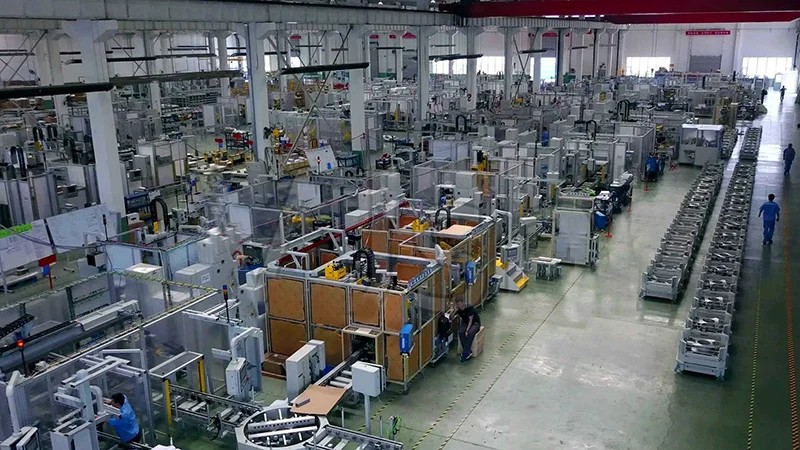 |
In a demanding industrial workshop or high-traffic warehouse, the term "heavy duty" is often misused. A true industrial workshop cart is not just a two tier cart on wheels; it's a piece of engineered equipment. The difference lies in the unseen details: the quality of the steel, the method of its construction, and the intelligence of its design features. These details determine whether a cart is a reliable asset or a short-term liability.
|
A cart's strength begins with its frame. A light-duty cart often uses thin, bolted-together angle iron. An industrial-grade cart starts with high-quality Q235 structural steel, known for its excellent weldability and strength. This material is formed into robust 30x30mm rectangular tubing.
This frame isn't bolted; it's unified using CO2 gas-shielded welding (MIG/MAG). This process creates deep, full-penetration welds that are stronger than the surrounding metal, resulting in a single, rigid chassis. This is why it can be rated for a 600kg load capacity—the construction method ensures it can handle sustained, heavy use without flexing, warping, or failing at the joints.
In a workshop, carts are constantly hit, scraped, and exposed to chemicals. Standard paint chips easily, exposing the steel to rust and degradation. A professional tool uses electrostatic spraying (powder coating). This process involves electrically charging the powdered pigment, which is then drawn to the grounded steel frame. It's baked on, creating a thick (often $\ge 60\mu\text{m}$) , uniform, and incredibly durable finish. This coating is far more resistant to chipping, scratching, and chemical corrosion, protecting the steel and extending the asset's life significantly.
Beyond the core construction, it's the small design features that prove a cart was built by engineers who understand the work environment:
| Talk With An Expert |
A cheap, light-duty cart is a consumable item you expect to replace. A cart built with Q235 steel, industrial welding, powder coating, and intelligent design features is a long-term capital asset. It's a tool engineered to provide a lower total cost of ownership through years of reliable, safe performance in a true industrial environment.
Q235 is a high-quality carbon structural steel. Unlike simple sheet metal, it provides the high strength and excellent weldability needed for a cart's frame to be rated for a 600kg load and to withstand industrial use.
Powder coating is thermally bonded to the metal, creating a much thicker, harder, and more durable finish. It is far more resistant to chipping, scratching, and rust, which is essential in a workshop environment.
It securely locks the pull-out shelf in place during transit. By being "inner-lined" (flush with the frame), it eliminates the snag hazard of external bolts or handles, which can catch on clothes or equipment.
This is an industrial guide system. The V-shaped wheel runs along a matching angle steel track, which keeps the pull-out shelf perfectly aligned. This prevents jamming and ensures it can slide smoothly even with heavy weight on it.
A fully welded frame (using processes like CO2 gas-shielded welding) creates a single, rigid unit. A bolted frame has many failure points, will loosen (wobble) over time, and cannot safely support the same amount of weight.